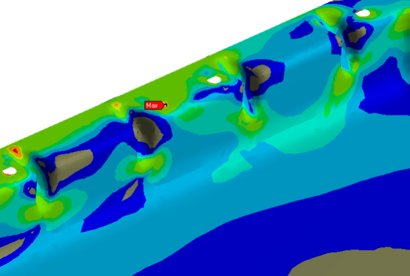Learn why engineers need the Finite Element Method (FEM) and why it is so useful in development, process optimization and quality assurance.
The Finite Element Method (FEM) is a numerical calculation method for solving a variety of physical problems. This means that complex real loads on elements are both modelled and mathematically approximated and solved. This method makes life easier for engineers in many different application areas. For further explanation you will find here Further information on the definition of the finite element method.
Engineers need the finite element method especially for product development.
Especially in product development, engineers in the development departments often resort to the finite element method. This allows them to dimension components that are still in the development phase on the computer and test them for all expected load types.
Typical loads to be investigated are therefore tensile or compressive stresses, thermal fluctuations or the effect of pressure. This method is very universal and its application is therefore not limited to these examples. Thanks to the method, our development teams are then able to quickly modify, confirm or reject ideas and hypotheses.

As a result, the development process can be accelerated enormously, since less time-consuming and costly real experimental series are required.
The benefits of FEM for process optimization
The application of the finite element method (FEM) to improve technical processes is another important field. It does not matter whether a new process is to be introduced or an ongoing process is to be optimized. In other words, an attempt is made to optimally coordinate components, tools and machines from the outset with the aid of simulation results.
Furthermore, thanks to this calculation method, for example, the material flow of a component at very high temperatures or the friction and wear properties of a tool part can first be simulated on the computer. In the event of real damage, both of these processes could damage entire machines, resulting in expensive repair costs and long maintenance times.
FEM in quality assurance
Even after production processes have finally started, it is very important to carry out ongoing monitoring and quality assurance. Damaged components and tools are typically examined with physical methods. An example of this is SEM, which stands for scanning electron microscopy. However, in this case it is again only possible to a limited extent to reconstruct the complete chronological course of damage. The finite element method offers engineers the advantage that additionally stored process data from the machine can be included in the simulation. Thus, the combination of the resulting theoretical stress distribution and the laboratory findings provides a more rounded picture and thus makes it easier to find process faults and to rectify them quickly.
On our pages you will learn, how you can accelerate and optimize your product development process with the help of the FEM method.
Are you curious ?
Inform yourself about our complete range of services and contact us !